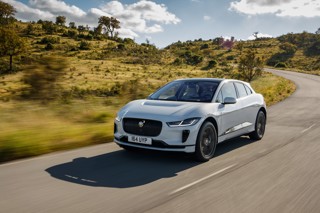By Alain Costa, head of service/delivery fleet Europe at ChargePoint
Year-on-year sales of electric vehicles (EVs) are increasing, with sales set to reach 21 million units in the year 2031. Driving these sales are changing policies, regulation, and customer demand.
As the UK works towards net zero emissions by 2050, new initiatives and policies are emerging that have provoked increased discussion surrounding the future of EVs.
Despite increasing penetration of EVs in the Fleet sector in the past few years, things have not developed as quickly as some people had hoped. Here we aim to give a few realistic trends you are likely to see in the coming year:
1. Proliferation of vehicles
There are 60 plug-in electric models available in Europe today. By 2021 that number will nearly quadruple to 214.
The larger OEMs are on the right track with vehicle designs and number of models and will scale eventually, but not in 2020. There is simply too much investment elsewhere for them to respond to the demand curve the industry will see next year but expect to see many announcements.
2. Year of the electric truck
2020 will be the year of the electric truck and van. The electric truck and van segment will heat up quickly, with several new announcements and launches from major players expected this year, as well as new commercial vehicles from “born electric” manufacturers such as Rivian and ARRIVAL.
3. Legislation, legislation, legislation
In 2020, transportation policy will become increasingly local. Taxes and incentives will continue to be put into place, impacting both drivers and businesses that will help drive increased EV adoption around the world.
Taxes will be leveraged to influence behaviors in cities, while more incentives will be implemented to motivate behaviors communities hope to change. Expect to see more low emission zones and diesel plans across the country. This will drive an acceleration of the electrification of urban delivery vans and trucks.
4. Short distance EV fleets will grow rapidly
Whilst last-mile delivery will continue to electrify, other short-distance fleets will also see rapid growth in 2020. New vehicles, such as yard tractors in shipping yards, distribution centers, railway depots etc., where there is no concern over the range and on-the-road charging infrastructure, will see a larger and faster-growing electric share.
Shuttle vans and garbage trucks will follow soon after, as they offer short routes with regular and assured depot charging during predictable, relatively long in-depot dwell times.
5. Large commitments are coming
The number of fleets making the commitment to shift to electric has increased significantly, and 2020 will be the year of electric fleet pilots. Companies are realising a lack of charging infrastructure is not an argument for most fleets, as they return to base every night, and that the financial benefits are substantial. Amazon has already committed and the DHL – Street Scooter partnership should see an additional 20,000 EVs on the roads worldwide in 2020.
How long until you follow?



















Login to comment
Comments
No comments have been made yet.